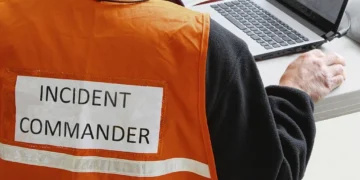Q: Who Has Overall Responsibility For Managing The On-Scene Incident?
A. Incident Commander
B. Operations Section Chief
C. Emergency Operations Center Director
D. Agency Executive
The answer is (A): Incident Commander
You can also read the complete details below, so continue reading;
During emergencies, natural disasters, and other crisis situations, effective management of on-scene incidents is crucial for ensuring the safety of responders and the public, as well as minimizing damage and facilitating a coordinated response.
The Incident Command System (ICS) is a standardized approach widely employed across the globe, offering a clear structure and a defined chain of command.
At the heart of the ICS is the individual with overall responsibility for managing the on-scene incident, known as the Incident Commander (IC).
In this article, we will explore the role and responsibilities of the IC in incident management.
The Incident Commander’s Role
The Incident Commander plays a pivotal role in coordinating and directing response efforts at the scene of an incident.
This individual assumes ultimate authority and is responsible for formulating and implementing an effective response strategy.
The IC is typically appointed or designated based on their experience, qualifications, and expertise in managing emergencies.
They serve as the primary point of contact for all personnel involved in the response, maintaining situational awareness and making critical decisions to effectively mitigate the incident.
Key Responsibilities Of The Incident Commander
1. Establishing Command
Upon arrival at the incident scene, the IC takes charge and establishes command.
This involves assessing the situation, determining the scope and severity of the incident, and initiating appropriate response protocols.
The IC also ensures the safety of responders and evaluates potential risks or hazards.
2. Developing An Incident Action Plan (IAP)
The IC is responsible for developing a comprehensive IAP, which outlines the overall objectives, strategies, and tactics to be implemented throughout the incident response.
This plan provides a structured framework for managing resources, assigning tasks, and coordinating various agencies and organizations involved.
Recommended: Which NIMS Component Includes The incident Command System (ICS)?
3. Allocating Resources
Based on the incident’s scale and complexity, the IC must assess resource requirements and allocate them accordingly.
This includes personnel, equipment, supplies, and specialized teams necessary to effectively respond to the incident.
The IC ensures that resources are deployed strategically, considering factors such as incident priorities, safety needs, and operational effectiveness.
4. Establishing And Maintaining Command Structure
To manage an incident efficiently, the IC establishes a command structure through which information flows and resources are coordinated.
This structure often follows the ICS hierarchy, including sections such as Operations, Planning, Logistics, and Finance/Administration.
The IC oversees these sections and ensures effective communication and coordination among them.
5. Making Critical Decisions
As the incident evolves, the IC must make timely and informed decisions based on the available information and the IAP.
These decisions can include resource deployment, risk assessment, tactical changes, and adjusting strategies as necessary.
The IC considers input from subject matter experts and relies on their experience to make sound judgments.
6. Providing Communication And Liaison
The IC serves as the primary spokesperson and liaison between the incident response team, external agencies, and the public.
They communicate essential information, issue public safety alerts, and maintain regular contact with key stakeholders.
Clear and concise communication is crucial to keep all parties informed and maintain public trust and confidence.
7. Ensuring Safety And Welfare
The safety and welfare of responders and the public are paramount concerns for the IC.
They must establish safety protocols, monitor changing conditions, and make decisions to protect lives and minimize further risks.
The IC coordinates with safety officers and ensures that appropriate measures are in place to mitigate hazards and address the well-being of personnel.
Conclusion
The Incident Commander holds the overall responsibility for managing on-scene incidents, employing the Incident Command System as a structured framework.
Through their leadership, decision-making, and coordination, the IC plays a vital role in effectively responding to emergencies, safeguarding lives, and minimizing the impact of incidents.
Their ability to manage resources, communicate effectively, and maintain situational awareness is critical for successful incident management and a coordinated response effort.











